Fundraising for Art Restoration? There’s an App for That!
Ruth Osborne
ArtWatch spoke out concerning the fundraising schemes at the Vatican back in November 2013. But now it seems they have gone beyond their annual five-day VIP tour of the Vatican’s historic buildings and collection to appeal to donors for big conservation projects, and have thought up an enterprising new way to generate support via social media. The Vatican just came out with a new smartphone app that donors can use to connect with each other and learn of new funding opportunities for restoration projects at the Vatican Museums.

Image from the PAVM website showing staff presenting to patrons on recent restoration make-overs.
The 32 year-old “Patrons of the Arts in the Vatican Musems” program has successfully created multiple opportunities for the restoration of works of art in the collection. Each year the Vatican Museums produce a “Wishbook” that highlights major restoration projects they’d like funding for. It serves as a kind of gift list for American patrons wooed by the glamour of associating themselves with a fine centuries-old arts collection such as that held by the Vatican; a book filled with unending avenues by which one may enter into an “influential community of art philanthropists.” There is an entire website and 7-person staff devoted to pursuing of deep-pocketed Americans looking for a tax break and a private service at the Sistine Chapel. And now, members of the various chapters throughout the U.S. can use their smartphones through the app “Patrum” to find out about new high-profile restoration projects that will serve to enhance their reputation as international arts ambassadors. According the Juliana Biondo at the Vatican Museum patron office, Patrum is “the first cultural institution app bringing together instant chat technology, crowdsource fundraising, and online community building.”
According to its description on the Apple website:
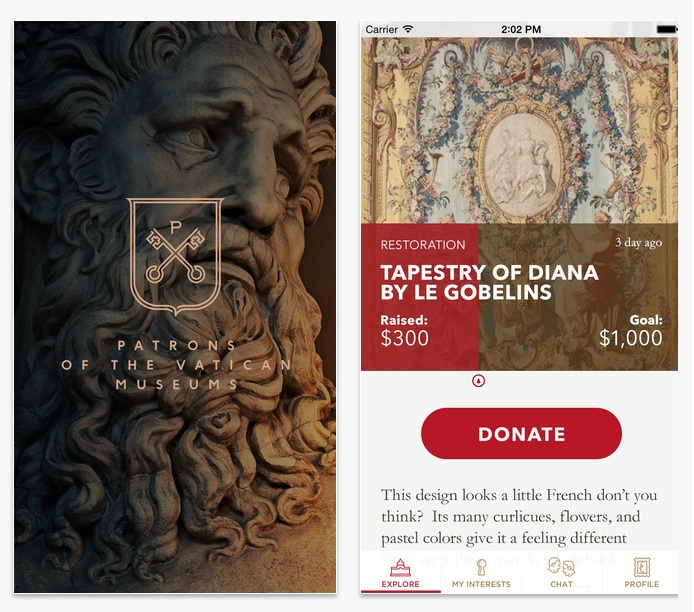
Patrum screenshot. Courtesy: Apple iTunes Store.
On Patrum, one can:
*Discover the Vatican Museums collection behind the scenes
*Receive daily updated “in the know” Vatican Museums news
*Comment on your favorite works of art
*Interest your favorite works of art and news to receive tailored alerts
*Chat fellow art lovers
*Donate to restoration projects
*Instantly chat Patrons staff curators
*Connect with current Patrons (or become one!)

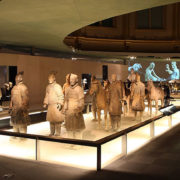
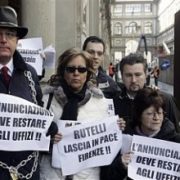
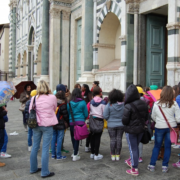
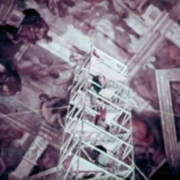



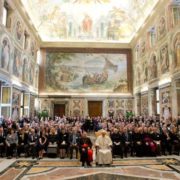


Leave a Reply
Want to join the discussion?Feel free to contribute!